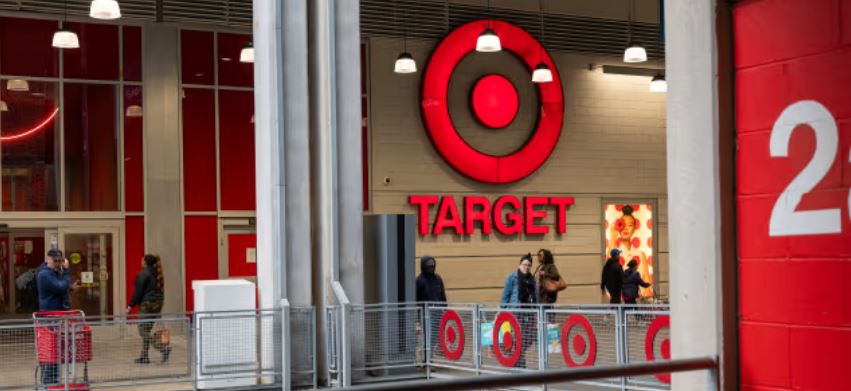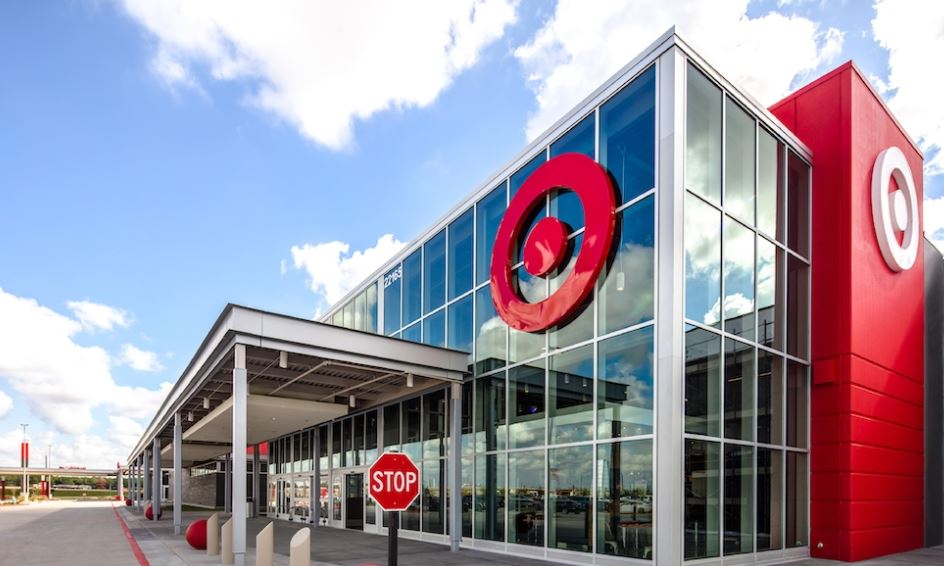In the present quick moving retail scene, buyer request is always showing signs of change. Organizations that adjust rapidly to advertise vacillations frequently see the greatest successes. As of late, Target exhibited exactly the way in which spry a significant retailer can be, definitely reducing costs on north of 5,000 items to draw in clients in a period of financial vulnerability. In addition to the fact that this move snatched consideration, yet Target’s most recent profit report shows it paid off abundantly.
The narrative of how Target explored these difficulties while keeping up with its strategic advantage can give significant experiences to different retailers and financial backers the same. In this article, we will investigate Target’s cost cutting methodology, the reasoning behind the move, the resulting influence on profit, and how everything affects the fate of the retail goliath.
Target Cuts Prices on 5,000 Products: The Strategy Unpacked

As expansion keeps on pressing family spending plans, significant retailers face an intense test: How would they keep people walking through high while guaranteeing overall revenues stay solid? For Focus on, the arrangement was both striking and determined — cut costs on 5,000 ordinary items across its stores. The reach included food, individual consideration things, child basics, and family items. By focusing on center classifications that drive rehash visits, the retailer guaranteed that clients saw esteem in their regular shopping trips.
This forceful cost cutting measure was not just about remaining serious. It was a proactive move toward safeguard portion of the overall industry when purchasers are progressively searching for bargains. Retailers have confronted contracting optional spending as clients reprioritize where they spend their cash. Accordingly, Target decided to captivate customers back with lower costs on things they required most.
Why Did Target Cut Prices on 5,000 Products?
At the core of Target’s choice to reduce costs on such a huge scope was a blend of financial tension and long haul system. Expansion, alongside post-pandemic changes in shopper propensities, has reshaped the retail scene. With cost cognizant customers turning into the standard, Target’s initiative perceived that keeping up with client faithfulness implied making prompt acclimations to valuing structures.
Target cut prices on 5,000 products. The valuing move was likewise intended to answer contenders like Walmart and Amazon, the two of which have comparably centered around minimal expense procedures to catch piece of the pie. The retail wars are savage, and in this serious climate, it’s not unexpected insufficient to depend on brand faithfulness alone. Target comprehended that to remain important, particularly in center classifications that draw in people walking through, it expected to offer something beyond a charming shopping experience — it expected to give unmistakable reserve funds.
One more explanation for this monstrous cost cut was stock administration. As supply binds standardized after the pandemic, Target ended up with overabundance stock, particularly in classifications like dress and home products. The limiting technique helped clear retires of more seasoned stock while keeping new stock moving. Besides, in a serious retail scene, limiting is a technique to guarantee less markdowns later on, permitting the retailer to streamline productivity over the long haul.
The Impact on Target’s Earnings and Financial Performance
At the point when Target at first declared cost cuts on 5,000 items, a few investigators addressed whether it could pull off such a technique without harming its main concern. Be that as it may, the organization’s new profit report discredits the cynics. Target kept up with benefit as well as posted a profit beat that far surpassed Money Road assumptions.
As per the latest figures, Target’s income for the quarter flooded by 10%, driven by higher people walking through and expanded client commitment. Same-store deals — a vital measurement for retailers — likewise saw a remarkable ascent. Target cut prices on 5,000 products The lower costs, joined areas of strength for with acknowledgment and proceeded with interests in web based business, assisted Focus with attracting a larger number of clients than expected.
This increase in deals permitted Focus to assimilate the effect of its cost cuts without fundamentally disintegrating edges. As a matter of fact, the organization figured out how to support productivity through cautious expense control, proficiency upgrades in supply chains, and an emphasis on high-edge items like gadgets and magnificence things. Target’s capacity to turn, cut costs, yet convey an income beat exhibits the strength of its functional model.
One part of Target’s procedure that merits exceptional notice is its emphasis on advanced change. The organization has put vigorously in its web based business stages and immediate administrations like drive-up and arrange pickup, which have been key drivers of development. Target cut prices on 5,000 products These channels are cost-productive as well as furnish Focus with an upper hand in an undeniably online-centered shopping climate
Consumer Response: How the Market Reacted to Target’s Price Cuts
At the point when Target cut costs, it accomplished something beyond draw in cost-cognizant customers. It revitalized brand insight as a retailer focuses on the requirements of its clients. By reducing costs on 5,000 items, Target sent a reasonable message: We figure out your monetary difficulties, and we are here to help.
Shoppers answered decidedly. Target saw an expansion in people strolling through both coming up and on the web. With families and people confronting the tension of rising living expenses, the commitment of lower costs on fundamental things resounded profoundly with Target’s center client base.
What’s especially fascinating is the way these cost cuts were viewed as a re-visitation of Target’s foundations. The retailer has for some time been known for its “Hope for something else, Save money” mantra, and the cost decrease felt like a support of that brand guarantee. Target cut prices on 5,000 products It reminded customers why they love Target — offering quality items at available costs.
Moreover, Target figured out how to explore the almost negligible difference between offering limits without weakening its exceptional contributions. By specifically reducing costs on center classifications and watching out for other high-edge things, Target safeguarded its allure for both economical customers and those searching for premium items. Target cut prices on 5,000 products This double methodology empowered the organization to take special care of a wide client base, improving its market position during a period of monetary vulnerability.
Lessons for Other Retailers: What Target’s Success Teaches Us
There are a few key examples different retailers can gain from Target’s methodology:
Adaptability is Crucial: The capacity to turn rapidly because of changing economic situations is critical to long haul achievement. Target perceived the tensions its clients were confronting and changed its evaluating appropriately. Retailers that stay unbending in their systems might battle to keep up with importance.
Inventory Management Matters: Target cut prices on 5,000 products Managing stock actually is basic. By decisively reducing costs, Target helped deals as well as gotten out abundance stock, making way for smoother tasks pushing ahead. Retailers ought to focus on adaptability in stock administration, particularly as supply anchors keep on fluctuating.
Digital and In-Store Synergy: Target’s capacity to combine its computerized and actual stores has been a significant driver of its prosperity. By coordinating administrations, for example, curbside pickup and immediate conveyance, Target upgraded the client experience and gained by the accommodation that cutting edge customers request.
Know Your Customer: Maybe in particular, Target has shown that understanding the client’s necessities is vital. Reducing costs on fundamental items addresses the monetary difficulties numerous families are confronting. Retailers that adjust their procedures to purchaser trouble spots will have a superior possibility flourishing.
The Future of Target: What’s Next?

Looking forward, Target’s capacity to explore financial tensions and keep up with productivity looks good for its future possibilities. Target cut prices on 5,000 products Target cut prices on 5,000 products While the cost stops helped in the term, the retailer is likewise zeroing in on long haul procedures to fortify its market position. Target keeps on putting resources into computerized change, improve client care, and grow its item collection popular classifications.
In the approaching quarters, experts anticipate that Target should keep up with areas of strength for its presentation, floated by its developing online business stage and a more productive store network. Target cut prices on 5,000 products Target has additionally declared plans to keep reviving its in-store insight, with new store organizations and ventures into more modest metropolitan areas.
The retailer’s emphasis on manageability and local area drives will likewise be key drivers of development, as customers progressively search out brands that line up with their qualities. Target has proactively gained critical headway around there, swearing to decrease its carbon impression and extend variety and consideration endeavors.
Conclusion
Target’s choice to reduce costs on 5,000 items during a period of monetary vulnerability was an intense move that has paid off. Target cut prices on 5,000 products The retailer expanded client steadfastness as well as supported its income, demonstrating that essential value cuts can be a mutual benefit for the two customers and the organization. Target’s new profit beat fills in as a demonstration of the force of versatility and client driven speculation in the present retail climate.
Target cut prices on 5,000 products For retailers, the illustrations from Target’s prosperity are clear: understanding client needs, being willing to change methodologies, and putting resources into computerized capacities are basic parts of flourishing in a serious market. As Target proceeds to improve and develop, it will probably stay a predominant power in the retail scene long into the future.
ALSO READ MORE
dark Jennifer Lopez has filed for divorce from Ben Affleck 2024
